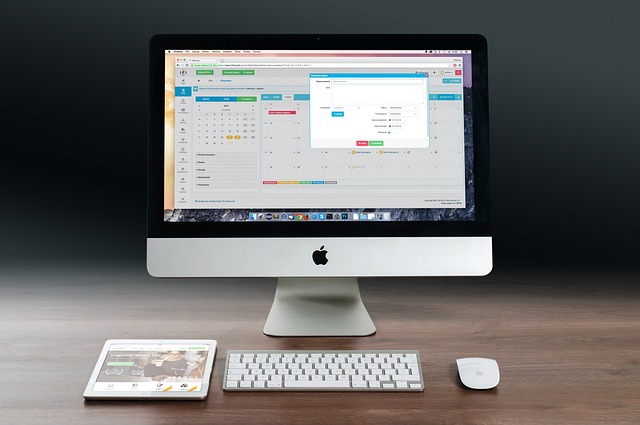To maximize an iPad's lifespan, regular software updates are essential for maintaining peak performance and security. Battery health should be frequently monitored, as a degraded battery can significantly impact the device's efficiency and longevity. If your iPad consistently underperforms or experiences unexpected shutdowns, it may be time to replace the ipad battery. This is a user-serviceable component that can be replaced independently or by authorized service providers using genuine Apple parts. The replacement process, which involves careful detachment of the screen assembly and proper reconnection of the new battery, should be carried out with precision to avoid damage. For those who prefer professional assistance, many services offer expert technicians and a warranty on their work. A fresh battery can restore your iPad's performance and extend its functional life, making "replace ipad battery" a key action for long-term device health. Regular maintenance, including app management, screen brightness adjustments, and low-power mode usage, complements hardware replacements to ensure your iPad remains reliable and efficient over time.
Extending the lifespan of your electronic devices is not only cost-effective but also environmentally responsible. With the right knowledge and maintenance, your iPad can serve you faithfully for years to come. This article offers a comprehensive guide on understanding your device’s battery health, proper handling and storage techniques, and the nuances of safely replacing an iPad battery at home. We’ll walk you through assessing your iPad’s battery performance, maintaining optimal functionality, managing software updates, and recognizing when professional assistance is necessary for your battery replacement needs. Learn how to replace an iPad battery with confidence and keep your tech in top shape.
- Understanding Battery Health: The Role of Replacing an iPad Battery
- Tips for Properly Handling and Storing Your iPad to Preserve Its Lifespan
- Step-by-Step Guide on How to Safely Replace Your iPad Battery at Home
- Assessing Your iPad's Battery Performance: Signs It's Time to Replace
- Maintenance Best Practices for Optimal iPad Functionality Over Time
- Software Management: Updates and Settings That Can Extend Your iPad's Life
- Professional Alternatives: When to Seek Help for Your iPad Battery Replacement Needs
Understanding Battery Health: The Role of Replacing an iPad Battery

Maintaining the longevity of your iPad hinges on several factors, with understanding and monitoring your device’s battery health being paramount. Over time, the capacity of an iPad’s battery diminishes due to natural wear and tear. This decline in performance can manifest as a shorter operational duration between charges, which is often the first sign that your battery may need attention. Regular software updates from Apple can optimize battery performance, but they don’t reverse the aging process of the cells within.
When it comes to replacing an iPad battery, timing is key. Battery replacement should be considered when the device consistently fails to hold a charge as expected for its age or when you experience unexpected shutdowns due to low power. Apple iPads are designed with user-serviceable batteries, allowing for easy removal and installation of a new one. This feature provides users with an opportunity to extend their iPad’s life by replacing the battery without resorting to an entire device upgrade. For those who are not comfortable performing this task themselves, authorized service providers or Apple Stores can handle the replacement professionally. By keeping an eye on your iPad’s battery health and addressing it promptly when necessary, you can significantly extend its operational lifespan, ensuring that your device remains a reliable companion for all your digital needs.
Tips for Properly Handling and Storing Your iPad to Preserve Its Lifespan

To maintain the longevity of your iPad, it’s crucial to handle and store it with care. The physical condition of your device can significantly impact its performance and overall lifespan. Always use a protective case designed for iPads to safeguard against drops, scratches, and other forms of damage. When not in use, store your iPad in a cool, dry place, away from direct sunlight or extreme temperatures. Dust and debris can accumulate over time, affecting the device’s functionality, so keep it clean with a soft, dry cloth. If you notice your iPad’s battery performance degrading, consider replacing the ipad battery to restore optimal operation. Battery health is a key component in the lifecycle of an iPad; periodic checks can help determine if a new battery is necessary. Regular software updates not only enhance security but also improve system efficiency, which indirectly contributes to the device’s longevity. Additionally, minimize the use of power-intensive applications when the battery level is low, as this can prompt the battery to age faster. Proper handling and storage are pivotal in preserving your iPad’s functionality and lifespan, ensuring it serves you well for years to come. If necessary, avail of professional services to replace the ipad battery, which can be a cost-effective solution to extend its useful life. Remember to back up your data regularly to prevent loss in case of hardware issues, and to maintain an organized digital space that contributes to the device’s performance efficiency.
Step-by-Step Guide on How to Safely Replace Your iPad Battery at Home

To extend the lifespan of your iPad and maintain its optimal performance, considering a DIY replacement of its battery can be both cost-effective and empowering. Before embarking on this task, ensure you have the correct tools and genuine replacement parts to avoid damage to your device. Here’s a step-by-step guide tailored to assist you in safely replacing your iPad battery at home:
1. Preparation: Begin by turning off your iPad and disconnecting it from any chargers. Remove the SIM card tray to safeguard your data. Ensure you have a pentalobe screwdriver, a suction handle, a heat resistant mat, a spudger tool, and a set of precision screwdrivers. Apple’s official service manuals can provide precise instructions on which tools are necessary for your specific model.
2. Battery Replacement: Carefully detach the iPad screen assembly by removing the eleven pentalobe screws securing it to the iPad chassis. Gently lift the screen off the device, placing it display down on the heat resistant mat. Use the spudger tool to disconnect the battery connector and LCD cable connectors from the motherboard with precision. Remove the screws holding the battery in place and lift out the battery. Proceed to place the new battery into position, ensuring it’s properly aligned. Reattach the battery connector, followed by the LCD cables, being mindful not to crease or bend the cables excessively. Finally, reassemble the device by reversing the disassembly process, making sure all screws are securely tightened.
3. Post-Replacement: After completion, power on your iPad to verify that it functions correctly. Check for any signs of improper functioning, such as uneven backlighting or battery percentage inaccuracies. If everything appears normal, your DIY replacement is successful. Remember, patience and attention to detail are key during the process. Should you encounter issues, consider consulting professional repair services or referencing official Apple documentation for guidance. Regular maintenance and careful handling will further contribute to the longevity of your iPad’s performance after battery replacement.
Assessing Your iPad's Battery Performance: Signs It's Time to Replace

Regularly assessing your iPad’s battery performance is key to extending its overall lifespan. If you’ve noticed that your device isn’t holding a charge as long as it used to, or if it’s displaying a significantly reduced battery percentage after charging, these could be signs that it’s time to consider replacing the battery. A consistent decline in battery life, even after a full charge, and an increase in charging frequency are clear indicators of diminishing battery health. The iPad’s performance may also become erratic; for instance, it might shut down unexpectedly when the battery reaches 30%, which is a common threshold indicating battery recalibration or replacement needs. Additionally, if your device takes longer to charge than usual or doesn’t charge at all, these are unmistakable signals that the battery may have reached its capacity and should be replaced by a professional. Regularly monitoring your iPad’s battery usage through iOS settings can help you make an informed decision on whether a new battery will revitalize your device or if other hardware issues might be contributing to its reduced performance. Replacing an aging iPad battery can significantly improve the functionality of your device and increase its usable life, making it a wise investment for continued enjoyment of your tablet.
Maintenance Best Practices for Optimal iPad Functionality Over Time

Regular maintenance and care are pivotal in maintaining the optimal functionality of your iPad over its lifespan. To start, ensure that your device’s operating system is up-to-date; updates often include performance enhancements and security patches that can significantly impact your iPad’s efficiency. Additionally, be mindful of the apps you install and use. Regularly review your app library, uninstall infrequently used apps to free up valuable storage space, and consider removing those that drain battery life excessively.
When it comes to battery health, it’s advisable to replace the iPad battery if it no longer holds a charge as effectively as it once did. A degraded battery can lead to reduced performance and an increased likelihood of unexpected shutdowns. To proactively manage your device’s power, adjust screen brightness to a comfortable level and close background apps when not in use. Utilizing low-power modes can also extend your usage time between charges. For those who notice significant changes in battery life, it may be time to consider a battery replacement service. This service is typically offered by Apple or authorized service providers and ensures that your iPad receives a genuine replacement battery, restoring its capacity to hold a charge for extended periods, thus enhancing its functionality and longevity. Regularly back up your data to iCloud or a computer to prevent loss in case of issues during the repair process. Taking these steps will help ensure your iPad remains a reliable companion for years to come.
Software Management: Updates and Settings That Can Extend Your iPad's Life

Regular software maintenance is key to prolonging your iPad’s operational lifespan. One of the most impactful practices for maintaining device performance is keeping its software up-to-date. Apple routinely releases updates that not only introduce new features but also address system vulnerabilities and improve overall system efficiency. These updates can sometimes optimize battery performance, which in turn can prevent unnecessary battery drainage. For instances where battery health has degraded, considering a replacement ipad battery is a viable option. It’s a cost-effective solution that can breathe new life into your device, as opposed to investing in a new iPad altogether.
In addition to timely updates, customizing your iPad’s settings can also extend its lifespan. Adjusting display brightness and enabling low-power mode when not in use can significantly reduce battery strain. Similarly, managing which apps have access to background data can prevent excessive resource usage, ensuring that your iPad operates smoothly over time. Additionally, deleting or archiving unused apps can free up storage space and improve the device’s performance. Regular software management, coupled with proactive maintenance like replacing an old or degraded battery, can help ensure that your iPad serves you reliably for years to come.
Professional Alternatives: When to Seek Help for Your iPad Battery Replacement Needs

When an iPad’s battery begins to hold less charge or doesn’t last as long as it once did, considering a battery replacement is often the most efficient solution. While some users might opt for DIY tutorials found online to replace their iPad battery, this approach comes with inherent risks such as potential damage to the device if not executed perfectly. It’s advisable to weigh the cost of a professional service against the value of your iPad and the importance of protecting its data integrity. Professional services ensure that the replacement is performed by skilled technicians who can diagnose additional issues beyond just the battery. They use authentic parts, which means there’s less chance of future complications. If you’re not confident in your ability to safely replace an iPad battery, or if the device is out of warranty, it’s wise to entrust this task to a reputable repair center. They can often provide a quick turnaround and a warranty on their work, giving you peace of mind that your device will function at its best for years to come. By choosing professional assistance for your iPad battery replacement needs, you not only extend the lifespan of your device but also ensure it remains in optimal condition for all your computing tasks.
In conclusion, extending your iPad’s lifespan is a multifaceted endeavor that encompasses understanding battery health, proper handling and storage, and engaging in regular maintenance. By keeping an eye on your device’s performance, managing software updates effectively, and knowing when to replace your iPad battery, you can ensure your device remains reliable for years to come. While replacing an iPad battery at home is a viable option with the right guidance and tools, it’s equally important to recognize when professional assistance is necessary. Adhering to the tips outlined in this article will help you maintain optimal functionality and longevity of your iPad, making ‘replace iPad battery’ a task you may not need to perform as frequently as you might think. With diligent care and attention, your iPad can continue to serve as a versatile tool for work, learning, and entertainment for the long haul.
